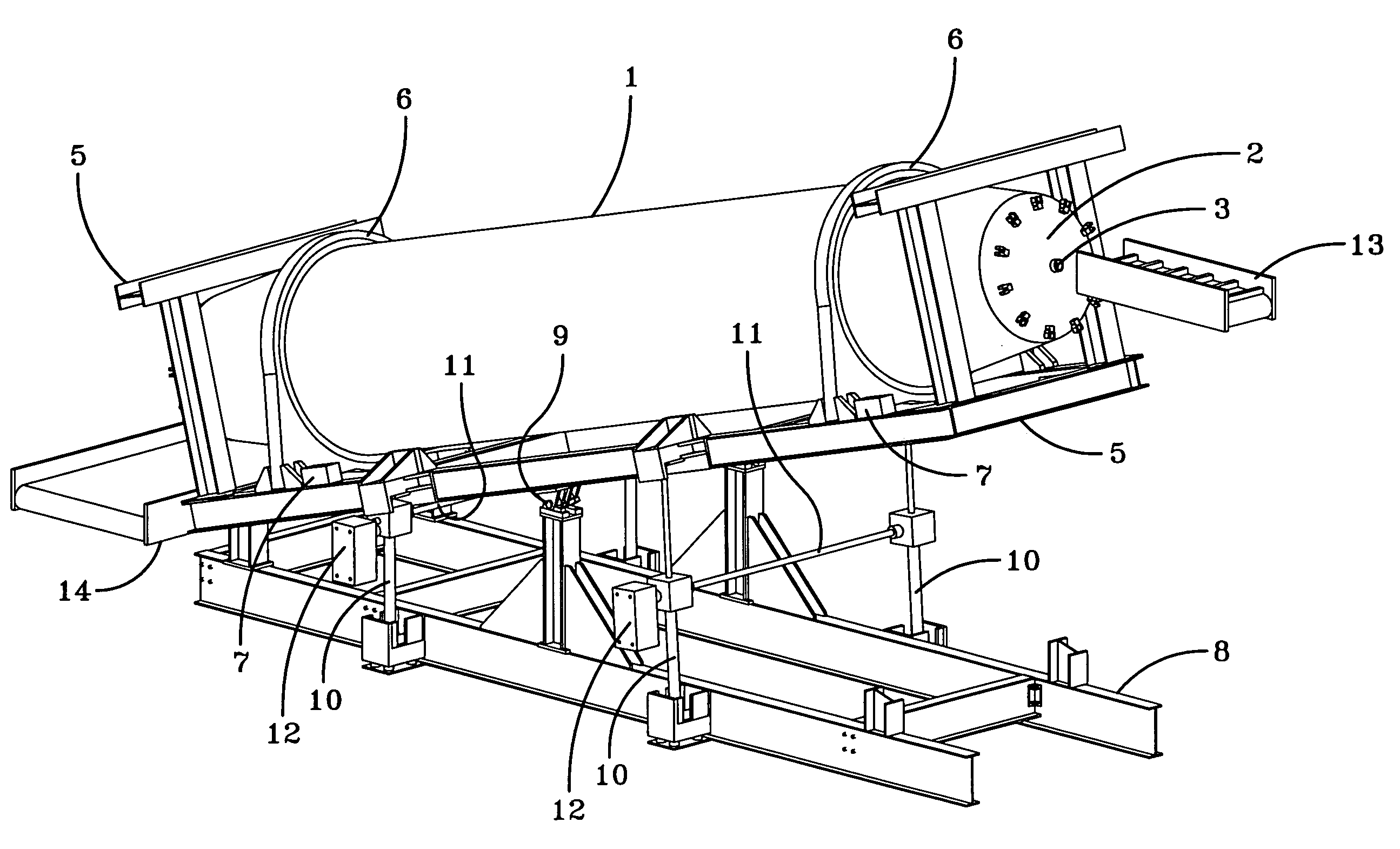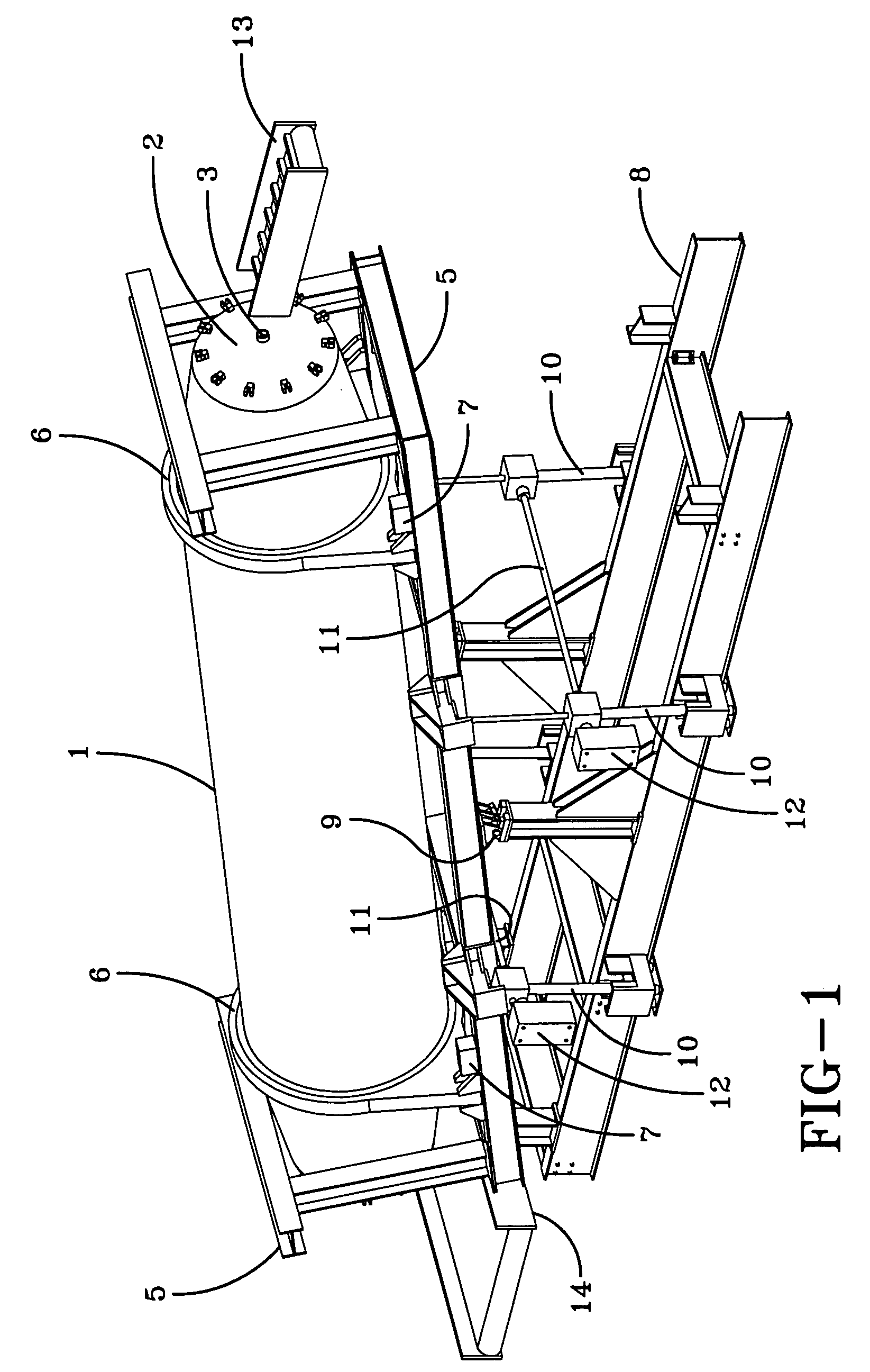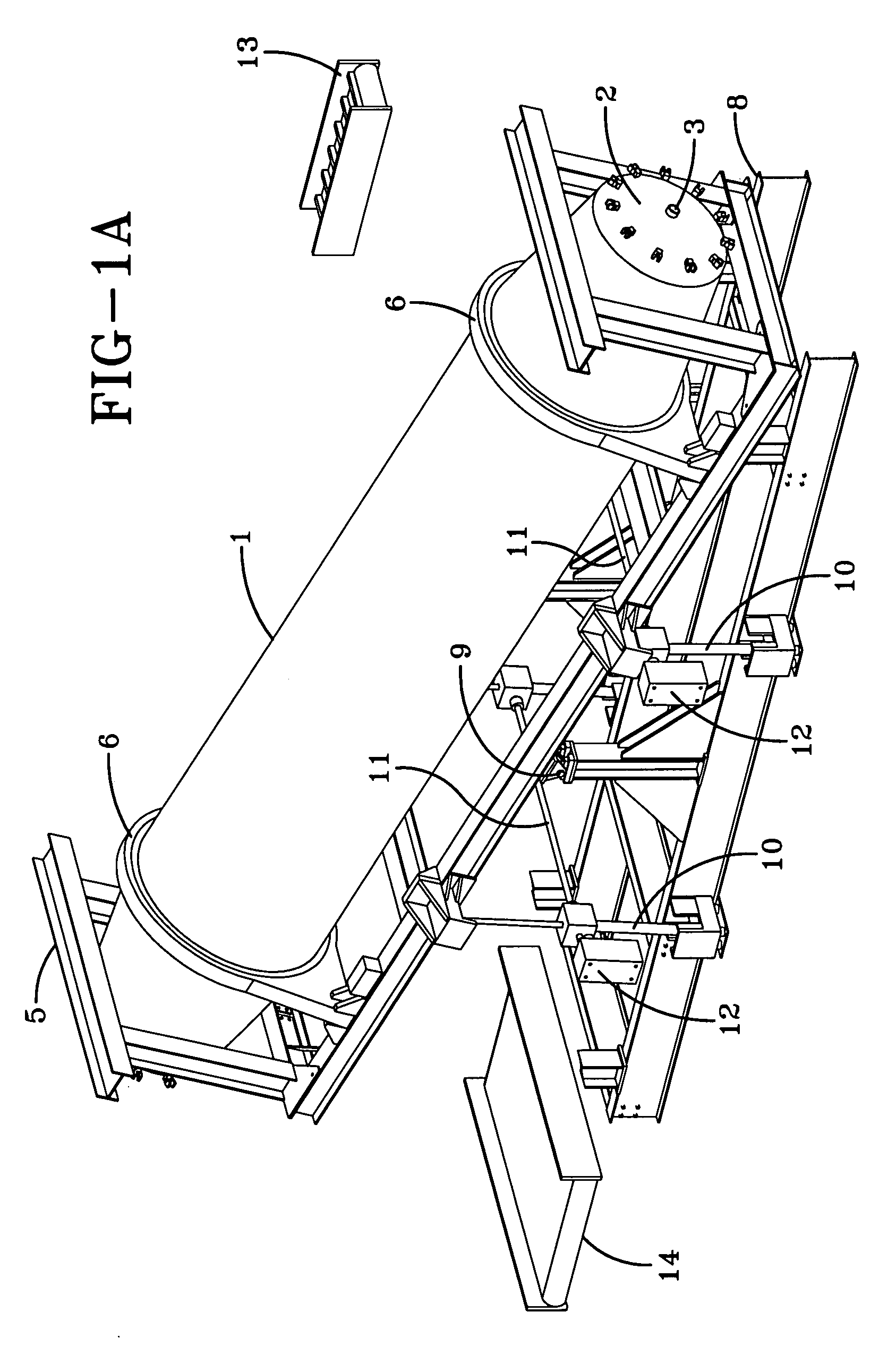Waste processing apparatus and method featuring water removal
- Summary
- Abstract
- Description
- Claims
- Application Information
AI Technical Summary
Benefits of technology
Problems solved by technology
Method used
Image
Examples
Embodiment Construction
[0075]In accordance with the foregoing summary, the following provides a detailed description of the preferred embodiment, which is presently considered to be the best mode thereof.
[0076]The invention relates to a process for recycling waste. This process is sterilizing high density materials such as glass, plastics, metals and recovering others from municipal solid waste (MSW) and converting paper, cardboard, food waste, etc. to a usable fiber and separating it from other recyclable materials.
[0077]FIG. 1 shows an example of an apparatus for processing solid waste products in accordance with one embodiment of the present invention.
[0078]FIG. 1 shows a rotatably mounted cylindrical vessel 1 having a first end, a second end and an interior surface, at least one end terminating in a hatch 2 that may be opened to allow access to the interior of the vessel and sealed closed to allow pressurization of the vessel. It is preferred that the vessel have a hatch on either end such that the ve...
PUM
 Login to View More
Login to View More Abstract
Description
Claims
Application Information
 Login to View More
Login to View More - R&D
- Intellectual Property
- Life Sciences
- Materials
- Tech Scout
- Unparalleled Data Quality
- Higher Quality Content
- 60% Fewer Hallucinations
Browse by: Latest US Patents, China's latest patents, Technical Efficacy Thesaurus, Application Domain, Technology Topic, Popular Technical Reports.
© 2025 PatSnap. All rights reserved.Legal|Privacy policy|Modern Slavery Act Transparency Statement|Sitemap|About US| Contact US: help@patsnap.com



